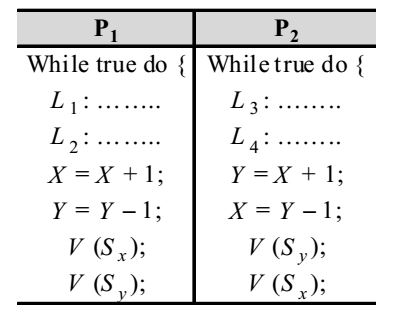-
Consider two processes P1 and P2 accessing the shared variables X and Y protected by two binary semaphores Sx and Sy respectively, both initialized to 1. P and V denote the usual semaphore operators, where P decrements the semaphore value, and V increments the semaphore value. The pseudo-code of P1 and P2 is as follows :

In order to avoid deadlock, the correct operators at L1, L2, L3 and L4 are respectively
-
- P(Sy), P(Sx), P(Sx), P(Sy)
- P(Sx), P(Sy), P(Sy), P(Sx)
- P(Sx), P(Sx), P(Sy), P(Sy)
- P(Sx), P(Sy), P(Sx), P(Sy )
- P(Sy), P(Sx), P(Sx), P(Sy)
Correct Option: D
Here semaphores are required to obtain mutual exclusion since both access X & Y. So at L1 P(Sx) which means now Sx = wait at L2 P(Sy) Sy wait, this prevents process P2 to start access X &Y. V(Sx) & V(Sy) in the end of P1 makes Sx & Sy signal so that at L3 & L4 P(Sx) & P(Sy) can start. Hence (d) is correct option.

